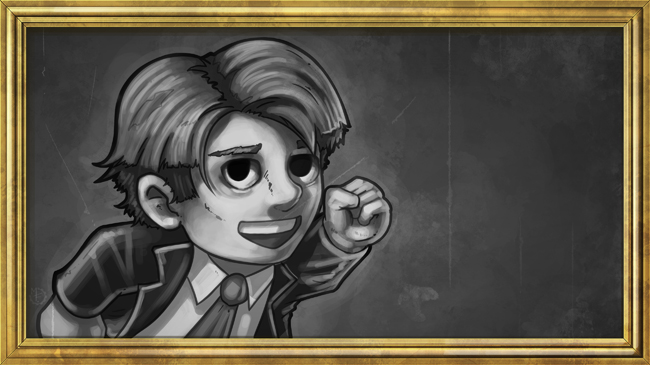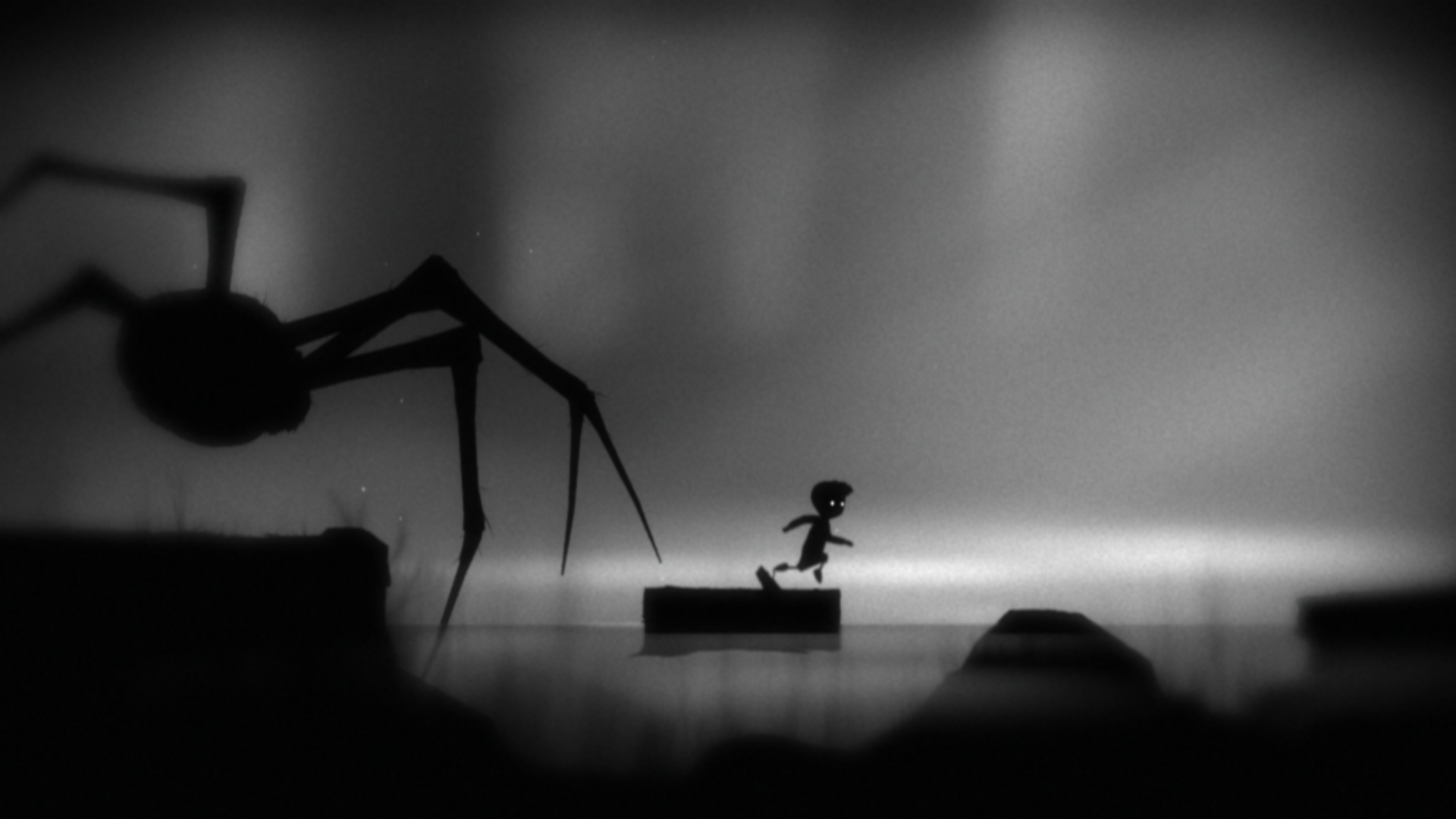Does Braid deserve its status as the iconic breakthrough indie game?
We spoke to three indie developers about the influence Braid has had on them.

Braid is one of those games that rolls lazily off the tongue in conversations about the most influential indie games of all time. Depending which of the many breathless pieces you've read about it over the years, Braid was either an "enormous leap towards realising the potential" of videogames that "ripped away…years of gaming blinkers", the "Sex, Lies and Videotape of indie gaming", or possibly even gaming's "Easy Rider" moment. It has a reputation as more than just a clever puzzler with a mind-bending rewind mechanic—it was seen as a changing of the guard, a signal that independent games could finally compete with their big-budget counterparts.
Even today, it's still on people's minds. Developers I've spoken to over the past few months have managed to slip it into conversations about seemingly unrelated topics, mentioning its brilliance or commercial success. But how influential was it actually? Did Braid directly inspire a generation of indie developers? Or was it just one indie project among many that managed to find an audience at a time when distribution platforms like Steam and Xbox Live Arcade were making games more accessible?

"In terms of graphics, aesthetics and emotion it was not particularly influential [on] me," says Dino Patti, co-founder of Playdead, who now works at a new studio called Jumpship. Playdead developed Limbo, a game that's often mentioned in the same sentence as Braid. Patti says that though he "really enjoyed the puzzles" and the way the time manipulation mechanic forced players to think "out-of-the-box", it didn't stick in his mind any more than other games at the time.
He was, however, keeping close tabs on its commercial success. Braid sold well when it came out in August 2008, shipping 55,000 copies in its first week on Xbox Live Arcade, and its numbers only ramped up when it came to Steam in April 2009. Jonathan Blow spent $200,000 making it, and by 2015 he'd raked in nearly $6 million. "I personally spent a lot of time analyzing [Braid's] numbers," says Patti, who was eager to convince investors that independent games could make money. Patti even spoke to Blow in 2009 about the ins and outs of releasing without a publisher. "We were looking very closely at how well it was doing," he says.
We were not influenced directly by its game design, but we were closely watching how games like Braid or World of Goo managed the business and marketing
Jakub Dvorský, Amanita Design
But that success wasn't unique. Patti says the team were watching "anything that did reasonably well back then", including Castle Crashers, which came out in the same month as Braid and sold better, racking up 103,000 players in its first three days. It would go on to be the best-selling Xbox Live Arcade game ever.
Hearing Patti talk about Braid as just one game in a crowd surprises me, because out of all the indie games that found an audience in the years following Braid, Limbo is arguably the most directly comparable: it's a puzzle-platformer that relies on atmosphere to tell a subtle story that's open to interpretation. But I get the same message from Jakub Dvorský, chief executive and founder of Amanita Design, which released Machinarium a year after Braid first came out.

Dvorský calls Braid a "very smart" puzzler and notes that it was "one of the first really successful indie games" but again, he sees it as part of a "wave of games"—which also includes the likes of World of Goo and Windosill—that started grabbing the attention of players and other developers.
The biggest gaming news, reviews and hardware deals
Keep up to date with the most important stories and the best deals, as picked by the PC Gamer team.
"We were not influenced directly by its game design, but we were closely watching how games like Braid or World of Goo managed the business and marketing," he says. "Both World of Goo and Braid had an impact on us mostly in how they broke into the games market, how their developers handled communication with players and media, and what business decisions they made."
And even when Braid's success did influence Dvorský, it was largely confirming "what we already felt, that it's possible to avoid publishers and use only storefronts who agreed on 70/30 or better revenue share". Before those games came out, Amanita had "already decided" its direction of travel, having released point-and-click adventure Samorost 2 in 2005, which was successful enough for it to develop Machinarium independently.

It's hard to disconnect the success of Braid and its contemporaries from the rise of platforms like Xbox Live Arcade and Steam, which made it easier than ever for indie developers to get their games in front of players. "The development became easier, and maybe even more importantly it also became possible to distribute and monetize games directly to players without having a publisher," Patti says. "All of a sudden making smaller, low-budget games started to make sense."
Some people were able to succeed while making games they really believed in, that was inspiring
Greg Kasavin, Supergiant Games
It's a thought echoed by Greg Kasavin, writer and designer at Supergiant Games, developers of Bastion, Transistor, and Pyre. "Independent games were being created long before the success of something like Braid," he says. "Kongregate launched in 2006, and [there was] stuff like Newgrounds, which Super Meat Boy came out of. There was always this scene of independent game creators making weird platformers and adventure games… but something like XBLA helped to make it a viable commercial business, and then it caught on with Steam."
But Braid had more of an impact on Kasavin than it did on Dvorský or Patti. It was on a "shortlist of games" that made the Supergiant team realize that "small groups of people can make impactful games that could feel very meaningful and personal, as well as being high quality." That list games included Plants vs. Zombies, World of Goo and, Castle Crashers, but Braid was "emblematic of both that era and the style of game."

Without the success of Braid and other games of the time, Kasavin says Supergiant wouldn't exist. The fact that Braid and other games like it found a large audience gave the team confidence that there was a possibility for indie development to be financially viable. "Supergiant was self-funded, it was people drawing into their savings or asking their family for help, things like that, and we couldn't have done that for fun. Even though we knew the chances were terrible, there had to be some sense that it was possible," he says.
"There was no part of us that thought we could be the next Braid or the next World of Goo, but the fact that these games did exist, that some people were able to succeed while making games they really believed in, that was inspiring both creatively and from the standpoint of trying to create a small studio."
When I ask Kasavin how Braid inspired him personally, it's clear that it's a game close to his heart, and one that he feels shouldn't simply be lumped in with others that came out at the same time. "I wouldn't call it a narrative game, but there's absolutely the sense that it's about something. It's not just a platformer for its own sake. Its mechanics and aesthetics are in service of a greater experience," he says.
"Every ounce of that game felt like it was richly layered with subtext, that it was a deeply personal work, and a poetic work. I'd been playing games with impactful narratives since I was a kid, but the way in which Braid was able to take every aspect of its presentation and use it in service of a meaningful experience where every detail was intentional, that to me was inspiring."

It's easy to overstate the influence that Braid had on indie gaming. To some in the industry, it's just one game (albeit it a memorable one) among many that happened to flourish in the indie boom of the late 2000s, which is itself tied closely to improvements in distribution through platforms like Steam.
But that doesn't mean you should completely dismiss it. Without Braid, there would be no Bastion. There would be no Transistor, and no Pyre. And while Supergiant is just one studio, I have no doubt that others owe Braid a similar debt. 2008 and 2009 were years in which many talented developers were floating in the wind, having lost jobs at companies that were struggling with both the global financial crisis and the rising cost of making games. "You're left with all these skilled developers wondering what they're going to do, and they start seeing games like Braid, and they're getting inspired," Kasavin says.
Braid's release may not be the singular defining moment for the indie gaming explosion, but who knows how many games wouldn't exist without it?
This article is part of the Class of 2008, a series of retrospectives about indie games that were released in 2008.
Samuel Horti is a long-time freelance writer for PC Gamer based in the UK, who loves RPGs and making long lists of games he'll never have time to play.


